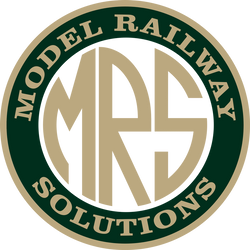
Graham Farish 371-112B Class 31/1 Diesel Locomotive 31309 'Cricklewood' BR Blue - N Gauge
£152.95
SKU 371-112B
Announced as part of our Winter 2022 British Railway Announcements, we are delighted to present the Graham Farish Class 31/1 as No. 31309 ‘Cricklewood’ in BR Blue livery.
The Class 31 is a favourite among enthusiasts and this Graham Farish model is a faithful rendition of these fan-favourites. The BR Blue livery applied to ‘Cricklewood’ was enhanced by its namesake depot with the addition of red bufferbeam cowling and the white bodyside stripe, a throwback to the livery in which the Class 31s were delivered when first built. This livery is expertly applied to the Graham Farish model using authentic colours, logos and fonts, whilst the technical features of the model are no less impressive thanks to the coreless motor, Next18 DCC decoder socket and pre-fitted speaker. Although all of this makes it easy to add sound to your model, why not make life even easier and opt for a SOUND FITTED model which will bring your layout to life straight out of the box.
MODEL FEATURES:
Graham Farish N Scale
Era 8
Pristine BR Blue livery
Running No. 31309
Named ‘Cricklewood’
Accessory Pack
NEM Coupling Pockets
Coreless Motor
Directional Lighting – independently switchable at each end via switches mounted on the circuit-board, or via DCC
Speaker Fitted
Equipped with a Next18 DCC decoder socket – recommended decoder No. 36-567A
Length 116mm
CLASS 31 HISTORY
The BR Class 31 Diesel Locomotives, originally known as the Brush Type 2s, were built by Brush Traction from 1957-1962, with a total of 263 locomotives constructed. The first Class 31 entered service in November 1957 and the design was one of the Pilot Scheme locomotives ordered by British Railways to replace steam traction. The Class was originally allocated to the Eastern Region, but gradually became common on both the Western and London Midland regions too.
The Class 31/1s were the standard locomotives, distinguished from the first batch of locos – the 31/0s – which had Red Circle multiple-working control equipment, a non-standard feature that led to them being withdrawn relatively early in the late-1970s. The 31/1s were fitted with Blue Star multiple-working equipment, as found on many other BR classes, and all had steam heating boilers from new, making them ideal for hauling passenger services. The Class 31/1s could be found on a variety of secondary and relief passenger duties as well as parcels and freight traffic. Commonly used in East Anglia, with allocations at Stratford and March depots, they were also found throughout the Eastern Region of BR with Finsbury Park sporting a large allocation, along with the depots at Tinsley, Immingham and Thornaby. Examples were also allocated to Bristol Bath Road and Old Oak Common on the Western Region, where they could be found working passenger trains as far west as Barnstaple and Paignton. In the early 1980s, Healey Mills and Bescot on the Midland Region also gained an allocation as replacements for Class 25s.
During the 1970s some Class 31s were fitted with Electric Train Heating (ETH) and these were reclassified as 31/4s to denote this feature. The 1980s would see BR undertake a programme of refurbishment for much of the fleet, this included the fitting of ETH to more locomotives but refurbishment was not reserved exclusively for the 31/4s, Class 31/1s were also refurbished without receiving ETH equipment. During refurbishment bufferbeam cowlings were removed along with the bodyside band, headcode boxes were plated over and fitted with two marker lights, and any remaining disc headcodes were removed. Where steam heat boilers remained, these were removed and a concrete block added instead to maintain the weight balance.
As passenger work dried up, many of the 31/4s were displaced and found themselves allocated to the departmental sector. In 1990, to reduce maintenance costs and prevent their ETH-fitted locos being borrowed for passenger work when extra traction was needed, the departmental sector isolated the ETH and removed the jumper cables from some of its 31/4s, resulting in these locos being reclassified as 31/5s. There were also two locomotives classified as 31/6, these had through ETH wiring fitted allowing them to work double-headed with an ETH-fitted loco.
The first withdrawal came in 1975 following accident damage, but most survived until the 1990s when EWS took on 153 examples from BR’s Transrail and Mainline freight divisions, although EWS spent little time running down its inherited fleet. Other operators however kept Class 31s active on the mainline and in 2022 it is still possible to see a 31 on the mainline. The Class has also been popular with the preservation movement, with more than 25 examples now preserved.



